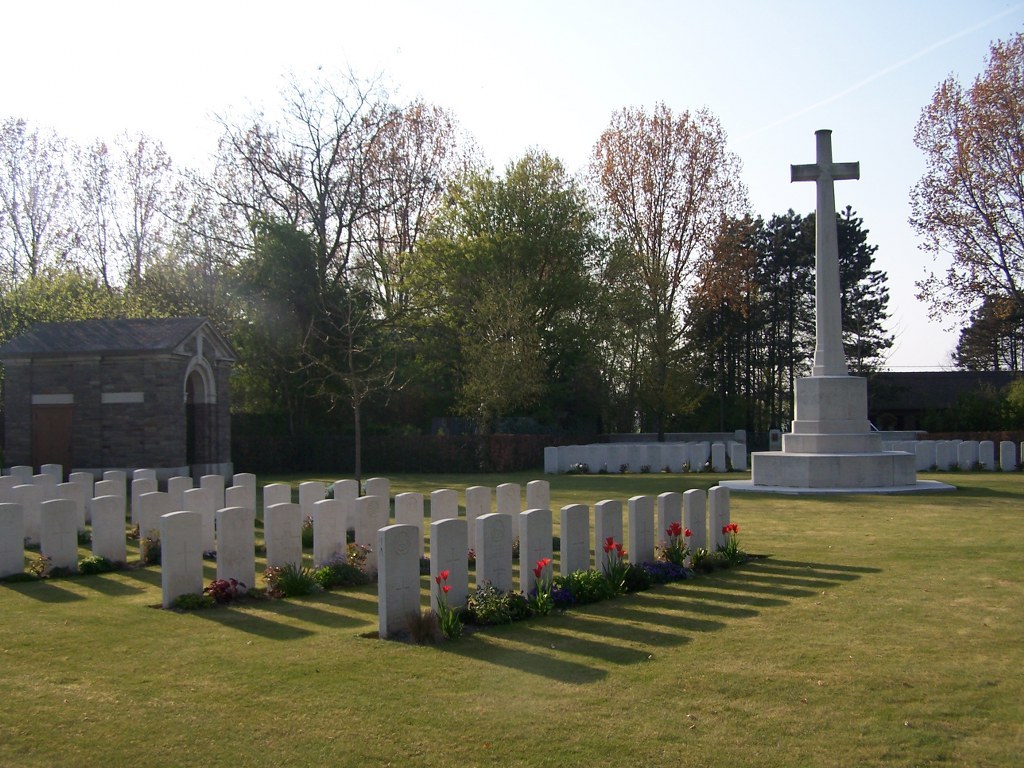Fred Whitwam
Date of birth: 1896
Date of death: 13.12.1917
Area: Outwood, Wakefield
Regiment: Kings Royal Rifle Corps
Family information: Son of Friend Frederick and Eliza Whitwam
Rank: Acting Corporal
Service number: R/7706
War Service
When war was declared in August 1914, Frederick Whitwam was employed at Wrenthorpe Colliery. He soon answered Lord Kitchener’s call for volunteers and enlisted in the army at Leeds, joining the Kings Royal Rifle Corps. After some training Private Frederick Whitwam was posted to join the British Expeditionary Force and landed in France on 3rd March 1915. Due to the absence of his service record it is not known which battalion he joined at this time. However he was later transferred to the 9th Battalion, Kings Royal Rifle Corps, who arrived in France to join the B.E.F. in May 1915.
Soon after arrival in France the 9th Battalion, Kings Royal Rifle Corps, attached to the 42nd Brigade, 14th (Light) Division was deployed in the Ypres Salient. When in the Hooge Sector, on 31st July 1915, the 14th Division came under attack from trench mortars, machine guns and liquid fire. The 9th KRRC incurred 333 casualties during the two days fighting before the enemy was repulsed. On 26th September 1915, in a subsidiary attack to the Battle of Loos, the 9th KRRC incurred a further 258 casualties.
Early in 1916 the 9th KRRC was based in the Arras area, before moving south to the Somme battlefield. On 24th August the 9th KRRC was part of a Divisional attack to clear Delville Wood, where they incurred 289 casualties before being relieved. Three weeks later, on 15th September, the battalion was deployed in the Flers-Courcelette area, when they incurred a further 243 casualties. On 22nd September the 9th Battalion left the Somme and returned to the Arras area.
After being involved in the fighting at the Scarpe, part of the Arras offensive during the spring of 1917, the 14th Division moved northwards to Flanders. The third Battle of Ypres began on 31st July 1917, but the battalions of the 14th Division were not involved until August, when after six days fighting, they established positions on the edge of Inverness Copse.
Soon afterwards the 14th Division moved from the Fifth Army command to the Second Army command under General Plumer. The Division remained in Flanders and was involved in the two Battles of Passchendaele during October and November 1917. At this time the 9th KRRC was deployed to working parties, assisting Canadian troops within the Passchendaele sector. The Battalion, when relieved in early December, moved back to billets in Steenvoorde. During the afternoon of 8th December the 9th KRRC moved by rail to Capricorn Camp, near Wieltje, in preparation for deployment in the line.
On the 12th December the 9th KRRC relieved the 6th Somerset Light Infantry in the support trenches at Belle Vue, the start of a three day tour. The weather was extremely cold and the trenches in a very bad condition. The enemy artillery was often active and the battalion casualties at this time included some of the Lewis Gun detachment and NCO’s, who had been with the battalion for some time.
One of these casualties was Acting Corporal Fred Whitwam, killed in action on 13th December 1917, near the village of Sint Jan, north-east of Ypres. He was buried in the Oxford Road Cemetery, where there are now 851 Commonwealth casualties buried, of which 297 are unidentified. Oxford Road was the name given to a road running behind the support trenches from the village of Wieltje to the Potijze-Zonnebeke road.
Fred Whitwam (Whitwham) is remembered on the Wrenthorpe Colliery Memorial which stands in the grounds of St John’s Church, Wakefield, as well as on the memorial at St Mary Magdalene Church, Outwood.
Family Life
Frederick Whitwam, sometimes Whitwham, was born in 1896, the youngest son of Friend Frederick and Eliza Whitwam of Dewsbury. At this time the family lived at Chickenley Lane, Soothill, Dewsbury. In 1897 his father, Friend Frederick Whitwam, who was a coal miner, died at the age of 41 years. In 1905 his oldest brother, John Charles Whitwam married Edith Ann Shaw and moved to Outwood, living at Newton Lane End. On the 1911 census Fred Whitwam is shown living with his widowed mother and two siblings at Myrtle Cottage in Kirkhamgate. At this time Frederick Whitwam was employed as a pony driver at the local coal mine. After the death of his mother during the summer of 1911, Frederick went to live with his married brother at Ledger Lane, Outwood.
 Oxford Road Cemetery
Oxford Road Cemetery

